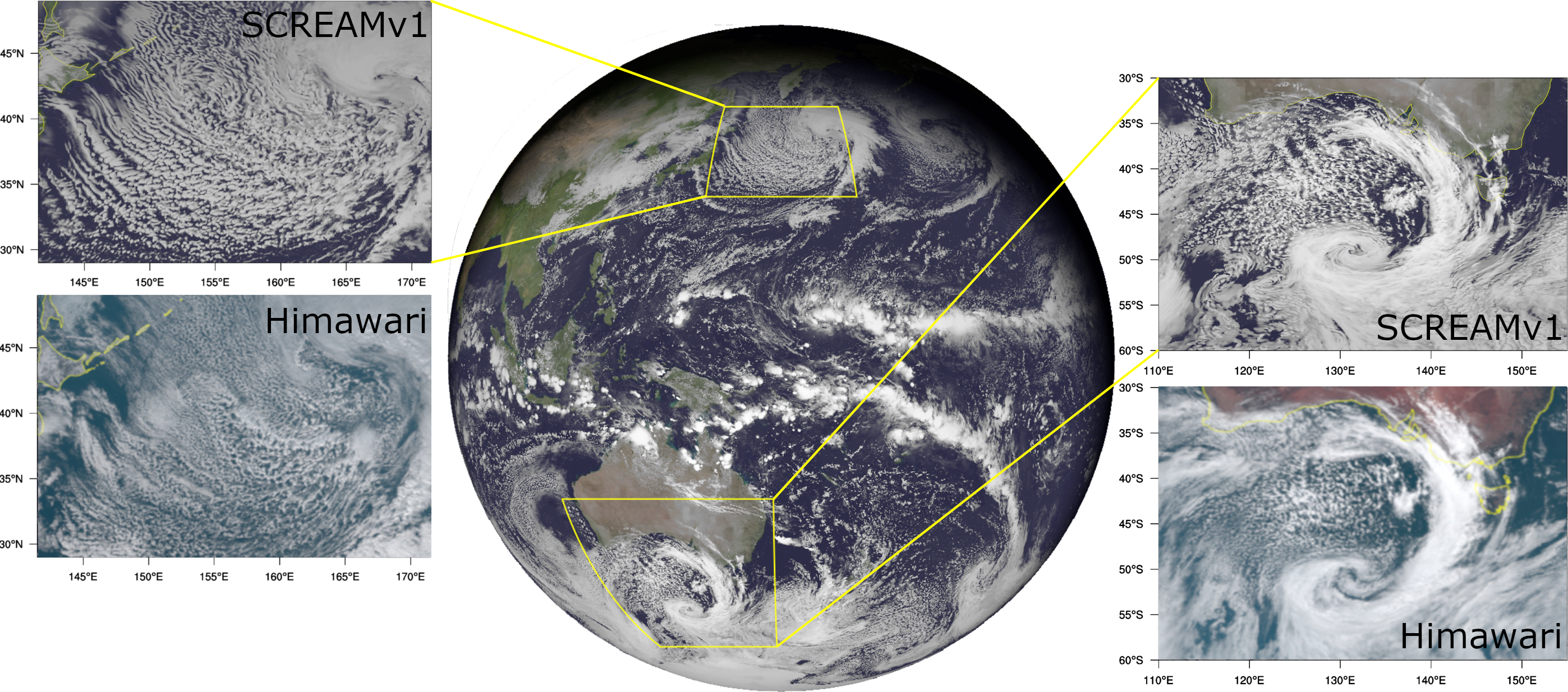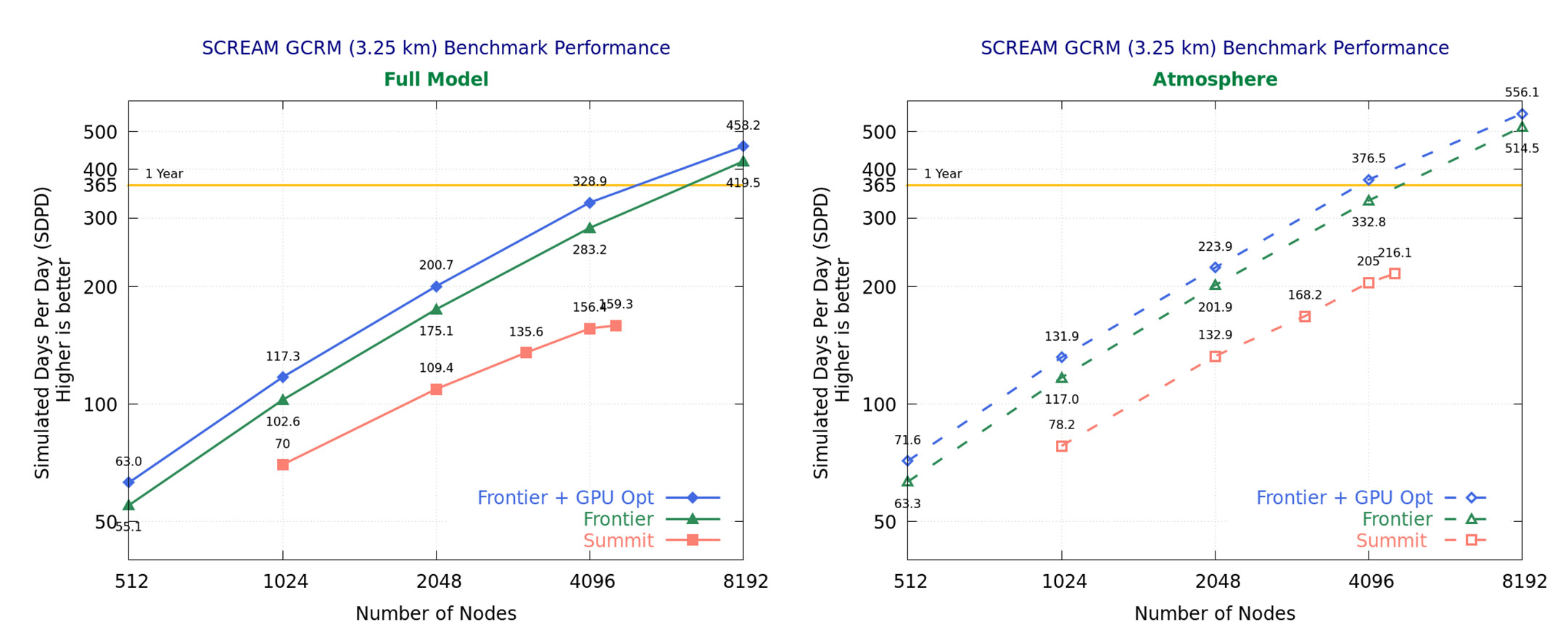E3SM is a finalist for the Gordon Bell Prize for Climate Modeling
The Gordon Bell Prize is a prestigious award given each year to recognize outstanding achievement in high-performance computing internationally. Starting in 2023, an additional Gordon Bell Prize for Climate Modeling will be awarded every year for ten years to recognize the contributions of climate scientists and software engineers. Financial support for this $10,000 award is provided by Gordon Bell, a pioneer in high-performance and parallel computing.
Bell has ideas about what sort of research he’d like to see the new prize inspire. “Can you build an interactive system that would really work at a reasonable resolution, and vast enough, so you can do ‘what if’ kinds of things?” Bell said. “So I was envisioning this ideal simulator that’s interactive and real-time … we need tools like that.”
— Gordon Bell about establishing a prize in Climate Modeling
Nominations are selected based on their impact and potential impact on the field of climate modeling, related fields, and wider society by applying high-performance computing to climate modeling applications. The award aims to recognize innovative parallel computing contributions toward solving the global climate crisis. Nominations are selected based on the performance and innovation in their computational methods and their contributions toward improving climate modeling and our understanding of the Earth’s climate system. The awardees will be announced at the International Conference for High Performance Computing, Networking, Storage and Analysis (Supercomputing 2023 in November) and the finalist papers will be published in the International Journal of High Performance Computing Applications (IJHPCA).
The E3SM model has been selected as a finalist for the inaugural Gordon Bell Prize for Climate Modeling.
The E3SM team submitted their work on an efficient and performance-portable implementation of the Simple Cloud Resolving E3SM Atmosphere Model (SCREAM). The SCREAM team presented performance results from Frontier, the first exascale computer in the Top500 (TOP500 Supercomputers | June 2023) list of the world’s fastest supercomputers. Importantly, the team benchmarked the model configuration they use for scientific research in contrast to a synthetic problem designed purely to demonstrate scaling. An example from one of these simulations is shown in Figure 1. The paper outlines results which to the team’s knowledge represent several firsts for a global cloud-resolving model (GCRM):
- First GCRM to run on an Exascale supercomputer,
- First GCRM to run at scale on both NVIDIA and AMD GPU systems,
- First nonhydrostatic GCRM to exceed 1 simulated-year-per-day (SYPD) of model throughput.

Figure 1. Snapshots of outgoing shortwave radiative flux at the model top from a January SCREAM simulation, taken two days into the simulation (2020-01-22 at 02:00:00 UTC). The orthographic projection in the middle panel shows model clouds represented by shortwave flux superimposed on a NASA Blue Marble image (NASA Visible Earth – Home). The insets show comparisons against Himawari-8 visible satellite imagery for two scenes: a cold air outbreak event near Siberia (left), and a cyclone south of Australia (right).
Building on the work detailed in an earlier article (Exascale Performance of SCREAM), the E3SM team has updated its finalist submission with new performance results. In the months since the original submission, the scientists were able to significantly improve the performance at scale on the Frontier system culminating in a 54% full-model improvement at 8,192 nodes (45% improvement for atmosphere throughput) and surpassing 1 SYPD for the first time for the full model.

Figure 2. Strong scaling results of the 3.25 km GCRM (Global Cloud Resolving Model) configuration of SCREAM v1 without I/O. Throughput measured in simulated-days-per-day, plotted as a function of compute nodes, on the pre-exascale Summit and exascale system Frontier. The left panel shows performance based on the total model time. The right panel shows the performance based on time spent in the atmosphere component. For both panels, the plots show the throughput of the baseline code on Summit (red curve) and Frontier (green curve) as well as the improvements obtained from targeted GPU optimizations (blue curve). The yellow line shows the 1 SYPD performance target.
The performance of SCREAM v1 running in a 3.25 km configuration is shown in Figure 2. The left panel depicts the performance of the full model running with prescribed sea surface temperature (SST). This includes the cost of the land, sea ice, and data ocean components, as well as the cost of communicating the fluxes and other state variables between these components and the atmosphere. These component and data models are relatively inexpensive and run 10-20 times faster than the atmosphere, and result in an increased cost on Frontier of the full model as compared to the atmosphere component (right panel, Fig 1.) ranging from 14% (on 512 nodes) to 21% (on 8,192 nodes). At higher node counts, the cost of the communication between the components becomes more significant, resulting in slightly less scalability for the full model as compared to the atmosphere component. E3SM’s best results are obtained on 8192 nodes, where the full model obtains 1.26 SYPD with the atmosphere component running at 1.52 SYPD.
Publication Reference
- Mark A. Taylor (SNL), Peter M. Caldwell (LLNL), Luca Bertagna (SNL), Conrad Clevenger (SNL), Aaron S. Donahue (LLNL), James G. Foucar (SNL), Oksana Guba (SNL), Benjamin R. Hillman (SNL), Noel Keen (LBNL), Jayesh Krishna (ANL), Matthew R. Norman (ORNL), Sarat Sreepathi (ORNL), Christopher R. Terai (LLNL), James B. White III (HPE), Danqing Wu (ANL), Andrew G. Salinger (SNL), Renata B. McCoy (LLNL), L. Ruby Leung (PNNL), David C. Bader (LLNL), The Simple Cloud-Resolving E3SM Atmosphere Model Running on the Frontier Exascale System, Submission to the ACM Gordon Bell Prize for Climate Modeling, 2023. https://doi.org/10.1145/3581784.3627044
Contact
- Mark Taylor, Sandia National Laboratories


